- 0086-571-85302990
- sales@greenskybio.com
China Green Tea Extract Powder Origin, Production Process and Factory Details
2023-08-14

Origin of Green Tea Extract Powder
Green tea, originated in ancient China, is known as the liquid gold of the East. In the history of civilization for thousands of years, green tea has penetrated into people's lives as a daily drink, and there are also medicinal records about green tea in ancient Chinese medicine classics.

The cultivation and origin of green tea
China has a long history of green tea planting, and each province has its own unique green tea varieties. Among them, Longjing in Zhejiang, Biluochun in Jiangsu, and Maofeng in Huangshan Mountain in Anhui are particularly famous. The soil, climate and cultivation techniques of these origins determine the quality and flavor of green tea.
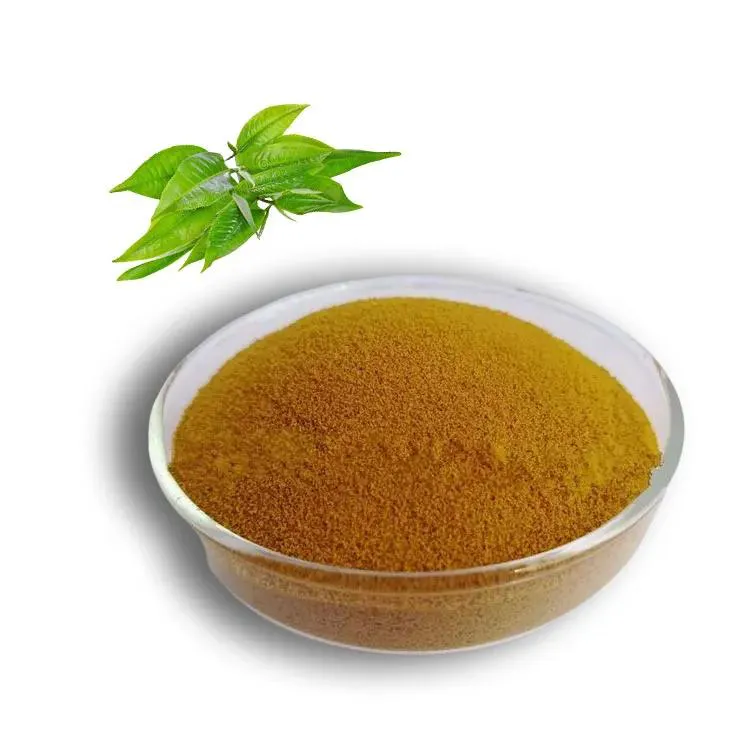
Production process of Green Tea Extract powder
The green tea leaves are strictly screened, and then enter traditional processes such as withering, greening, tumbling, drying, etc., and finally use supercritical CO2 extraction technology to obtain high-quality Green Tea Extract powder.
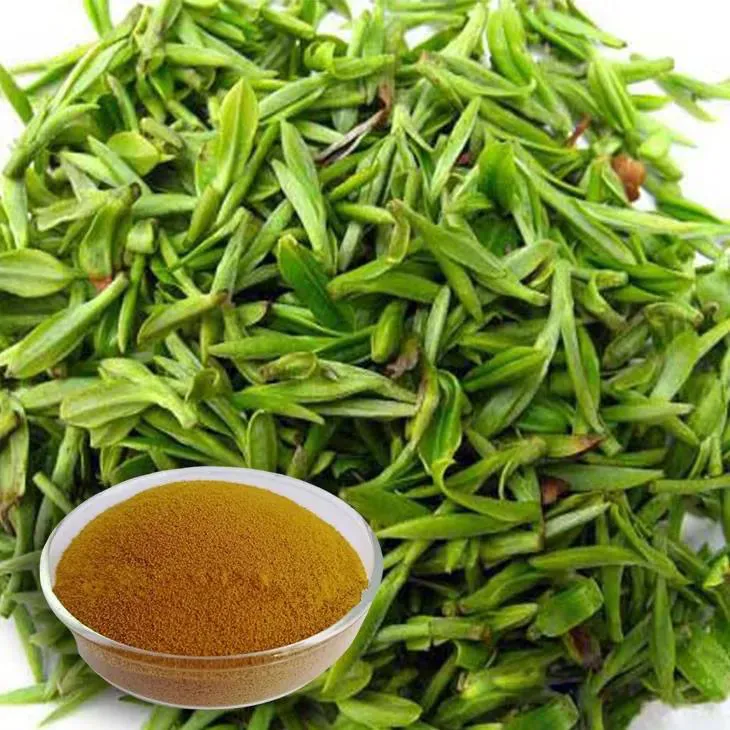
Quality and third-party testing
In order to ensure the quality of Green Tea Extract powder, most factories use third-party laboratories for quality testing. Through high performance liquid chromatography, gas chromatography, infrared spectroscopy and other technologies to ensure product purity and content of active ingredients.
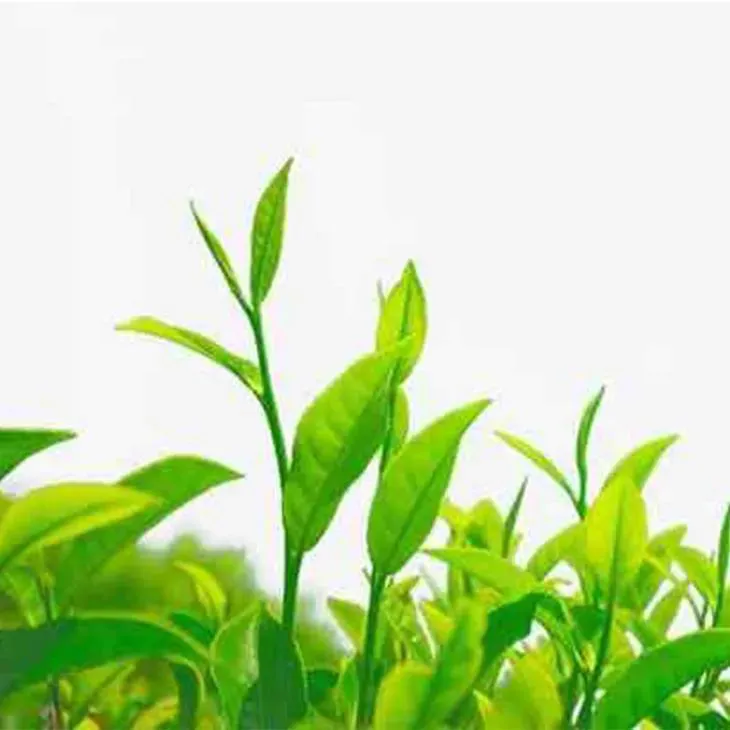
Transport and Storage
Green tea extract powder is sensitive to environmental conditions, so avoid heat, humidity and direct sunlight when transporting. When storing, it needs to be sealed in a cool and dry place to keep its active ingredients stable.
Sales and Marketing
In recent years, with the increasing focus on health food and natural extracts, the market demand for green tea extract powder is gradually rising. Food and drug manufacturers in Europe, North America and Asia are major consumer markets.
Status of Green Tea Extracts in National Regulations
In China, green tea extracts are regarded as food additives and pharmaceutical excipients, and their production and sales must follow the relevant regulations and standards of the State Food and Drug Administration.
Application of Green Tea Extract Powder
Green tea extract powder is widely used in health food, cosmetics, medicine and other fields. Especially in skin care products, its antioxidant and anti-inflammatory properties make it a popular ingredient.
Why Choose China Green Tea Extract Powder Factory
China's green tea planting history and rich extraction experience provide unique advantages for its green tea extract powder products. Coupled with advanced technology and strict quality control, the international competitiveness of the products is ensured.
How to Choose the Right Green Tea Extract Powder Supplier
When selecting a supplier, attention should be paid to its production license, product certificate, laboratory report and customer evaluation. It is worth mentioning that good suppliers not only provide products, but also provide customers with technical support and solutions.
Future Trends of Green Tea Extract
With the advancement of science and technology, the extraction technology and application fields of green tea extract will be further expanded. In the future, we expect green tea extracts to play a greater role in medical, biotechnology and other high-tech fields.
Green Tea Extract and Health
Green tea extract is rich in a variety of antioxidant substances, such as catechin, epicatechin, epicatechin gallate, etc. These active ingredients play a role in promoting cardiovascular health, supporting healthy metabolism and weight management, and resisting oxidation. Studies have shown benefits in areas such as stress.
Ecological Sustainability and Green Tea Cultivation
With the increased global focus on sustainable agriculture, many green tea plantations have adopted eco-friendly cultivation and management practices. This not only helps protect the soil and ecosystem, but also ensures the premium and high quality of the green tea.
Application of Green Tea Extract in Cosmetics
In recent years, green tea extract has become a popular ingredient in many skin care and cosmetic products. Its antioxidant and anti-inflammatory properties are used in anti-aging, soothing sensitive skin and brightening products.
Factory Automation and Productivity
Modern green tea extract factories have adopted automation technology on a large scale. From screening, cleaning to extraction and packaging, all processes are highly automated to ensure production efficiency and product quality.
Global Trends in Green Tea Extract
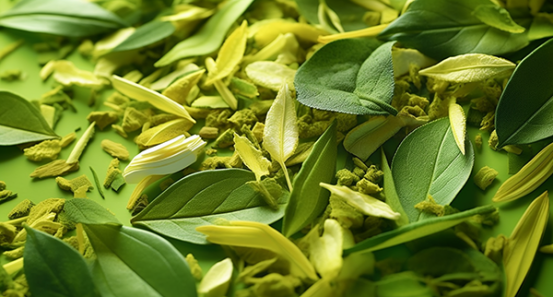
The global demand for natural and organic products continues to grow, and the use of green tea extract as a natural, non-polluting ingredient in industries such as food, beverages, cosmetics, and pharmaceuticals is also expanding.
China's position in the global green tea market
As a major producer and exporter of green tea, China occupies an important position in the global green tea extract market. With its rich planting history, unique planting techniques and high-quality extraction process, China has become the preferred supplier of many international brands and manufacturers.
Research and development of green tea extract
With the increase in scientific research investment, new applications and new effects of green tea extract are constantly being discovered. The potential applications of green tea extracts are vast, from cancer treatment to neuroprotection.
Establish long-term cooperative relationship with customers
China's green tea extract factory not only pays attention to product quality, but also pays attention to establishing long-term and mutually beneficial cooperative relationships with customers. Through continuous technical support, regular training and close communication, we ensure that customers' needs are met.
Future Prospects for Green Tea Extracts
Considering the multiple benefits of green tea extract in health, beauty, and medical fields, and the continuous demand for natural ingredients globally, we expect the green tea extract market to continue its growth momentum, bringing more opportunities and value to manufacturers and consumers .

Storage and Shipping of Green Tea Extract
High-quality green tea extracts need to be stored and transported under proper conditions to ensure the stability and long-term effectiveness of their active ingredients. It is recommended to store it in a dry and light-proof place, and ensure that it is protected from moisture and high temperature during transportation.
Green Tea and Chinese Traditional Culture
Green tea has a long history in China and is closely connected with Chinese civilization. Ancient literati often drank green tea to help their thinking and purify their hearts. Green tea has deep cultural ties to traditional Chinese art forms such as calligraphy, poetry, and painting.
Application of green tea extract in medicine
In addition to food and cosmetics, green tea extracts have also shown potential medical value in pharmaceutical research. For example, research into its cardiovascular health, tumor suppressor and anti-inflammatory effects is ongoing.
Compliance with International Standards
Green tea extract factories in China attach great importance to international certifications and standards, such as ISO, GMP, and HACCP, etc. These certifications ensure global quality standards and safety of products.
Market Trends and Consumer Feedback
With increasing consumer trends towards healthy and natural foods, the market demand for green tea extract products continues to grow. Manufacturers often interact with consumers to understand their needs and feedback, and constantly optimize products.
Develop new technologies and innovations
In order to meet the ever-changing demands of global consumers, China's green tea extract factories are developing new technologies, such as more efficient extraction methods, improving the stability of active ingredients, etc., to ensure the cutting-edge position of products.
Green Tea Extract and Environmental Protection
Many factories are taking steps to reduce the environmental impact of their production processes, such as adopting water-saving technologies, improving energy efficiency and using renewable resources. Green and sustainable production has become an important direction of the industry.
Training and Education
In order to ensure the professionalism and quality of production, the green tea extract factory often provides training and education for employees, emphasizing the importance of product knowledge, production technology and customer service.
Combination of Green Tea Extract and Other Chinese Herbal Medicines
In addition to being used independently, green tea extracts are often combined with other Chinese herbal ingredients to create new product formulations and provide consumers with more healthy choices.
Green Tea Extract and Modern Lifestyle
In the modern fast-paced life, people pay more and more attention to health and nutrition. Green tea extract is the supplement of choice for many due to its rich antioxidant and other benefits. It helps protect against environmental stressors, boosts the immune system, and provides a host of health benefits.
Application of Green Tea Extract in Cosmetics
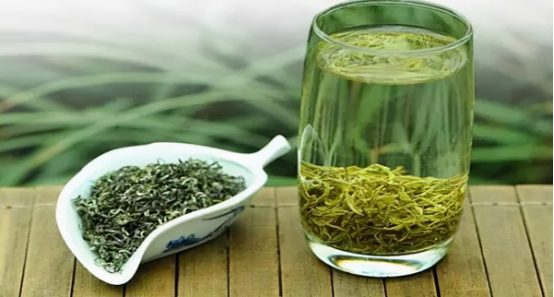
Green tea extract is also widely used in the cosmetic industry. Due to its antioxidant, anti-inflammatory and UV protection properties, it is a staple ingredient in many skin care products, shampoos and cosmetics. This allows consumers to benefit from the benefits of green tea extract in their daily skincare and makeup routines.
Certificate and Qualification of Green Tea Extract
In order to ensure the quality and safety of green tea extract, many factories have obtained a series of international certifications. These certificates provide consumers with peace of mind that the products they purchase have undergone rigorous quality control and testing.
Community Engagement and Social Responsibility
Many green tea extract factories are actively involved in community activities, such as funding local education and medical projects, supporting environmental protection actions, and forming partnerships with local farmers to ensure the quality and sustainability of raw materials.
Green Tea Extract and Cooking
In addition to traditional applications, green tea extract has also found its place in modern cooking. It can be used as a seasoning to add special flavor and color to food while bringing health benefits.
Tasting and Appreciation
Tasting green tea extract is also an art. From its color, taste and texture, you can feel the essence and history of green tea. Some experts and enthusiasts often organize tasting events to share their knowledge and appreciation of green tea extracts.
Consumer Stories and Reviews
As the popularity of green tea extract has grown globally, many consumers have shared their experiences with the product. These real stories and evaluations provide valuable references for potential consumers, and also provide manufacturers with directions for product improvement.
future outlook
With the advancement of science and technology and changes in the market, the application and research of green tea extract is still in continuous development. From genetic engineering to nanotechnology, scientists are exploring more possibilities to meet consumer needs and bring more benefits to society.
Pharmacological effects of green tea extract
Green tea extract contains many bioactive components, the most well-known of which are catechins. These compounds have been proved to have various pharmacological effects, such as anti-oxidation, anti-inflammation and anti-tumor, etc. This also makes green tea extracts get widespread attention in medical research.
Comparison with other plant extracts
Compared with other plant extracts, green tea extract stands out for its unique chemical composition and diverse efficacy. Green tea contains higher levels of catechins than black or white tea extracts, which is one reason for its powerful health benefits.
Position of Green Tea Extract in the Global Market
With the increasing demand for healthy food and natural supplements, the demand for green tea extract is gradually increasing in the global market. Green tea extract can be seen in Asia, Europe, and North America, proving its global popularity.
How to Choose High Quality Green Tea Extract
In order to ensure the quality of green tea extract, consumers should pay attention to its source, production process, certificate and third-party testing results. Only in this way can consumers be sure that the green tea extract they buy is safe and effective.
Green Tea Extract and Environmental Protection
Many green tea extract plants are produced sustainably to reduce their impact on the environment. From the selection of organically grown green tea leaves to the use of environmentally friendly extraction methods, these measures reflect the factory's sense of responsibility for environmental protection.
latest research progress
Research on green tea extract has never stopped. Recent studies have found that, in addition to the known benefits, green tea extract may also help with nervous system health, digestive system, and more. These new findings bring more application prospects for green tea extract.
Customer testimony and case sharing
Whether it is a business or an individual, there are many success stories about green tea extract. These cases provide potential customers with reference, and also prove the effect and value of green tea extract.
Food applications of green tea extract
The use of green tea extracts in the food industry is also increasing. It is added to various healthy foods and beverages, such as green tea drinks, green tea chocolate and green tea pastries, etc. Its antioxidant properties make foods healthier while adding a unique flavor to foods.
Use of Green Tea Extract in Cosmetics
Green tea extract is also used in many cosmetic brandsimportant ingredients. Its antioxidant, anti-inflammatory and anti-UV properties make it a star ingredient in skin care products. Whether it is a face mask, lotion or sunscreen, green tea extract offers consumers a variety of options.
impact on farmers
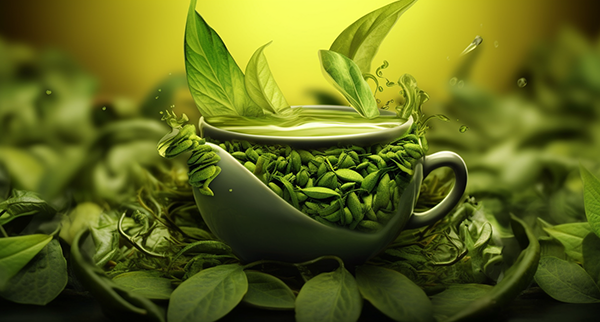
The cultivation of green tea provides a steady source of income for many farmers. In order to ensure the quality of green tea, many factories work closely with farmers to provide organic farming training and technical support to ensure the safety and organic standards of green tea.
storage and transportation
The preservation requirements of green tea extract are very strict. In order to ensure that its active ingredients are not affected, it must be stored in a dark, dry, and low-temperature environment. During transportation, special packaging and conditions are also required to ensure the quality and effectiveness of the extract.
How to Identify High Quality Green Tea Extract
Real high-quality green tea extract is brightly colored and fragrant. Through observation, smell and taste, consumers can initially identify the quality of green tea extract. A more professional way is to determine the content of catechins and other active ingredients through chemical analysis in the laboratory.
Green tea extract compared to other tea extracts
Green tea isn't the only option when we're discussing tea extracts. Black tea, white tea, oolong tea, and more all have their own unique extracts, each with their own unique chemical composition and health benefits. However, green tea extracts tend to win out when it comes to antioxidant properties, catechin content, and health benefits.
National regulations and certification
As a major producer of green tea, China has strict standards and regulations on the production and sales of green tea extracts. This includes aspects such as the cultivation of the raw material, the extraction process, the quality of the final product, etc. In addition, for green tea extracts exported abroad, the relevant standards and regulations of the target countries must also be met.
Customer Feedback and Evaluation
Over the years, consumer feedback has been consistently positive due to the high quality and significant health benefits of green tea extract. Many clients report that their physical health has improved significantly since starting to use green tea extract.
How to choose a green tea extract supplier
When selecting a green tea extract supplier, the following points should be considered:
Supplier reputation and experience: Choose a supplier with a good reputation and years of experience.
Quality Assurance: Make sure the supplier can provide all necessary quality certificates and third-party test reports.
Price: While price is a factor to consider, quality should not be sacrificed to keep costs down.
Customer Service: Choose a supplier who can provide high-quality customer service to ensure timely support when needed.
The place of green tea extract in modern research
In recent years, scientists have become increasingly interested in green tea extract, especially in studies of its health benefits. Catechins, specifically EGCG (epicatechin free phenolic acid), are the focus of research because it is considered the most active and health-benefiting component of green tea.
Application of Green Tea Extract in Cosmetics Industry
Green tea extract is also widely used in the cosmetic industry. Due to its powerful antioxidant properties, it is often used as an active ingredient in skin care products to help fight skin aging and environmental damage. In addition, its anti-inflammatory properties also make it ideal for sensitive skin products.
Market Trends of Green Tea Extract
The rise of global health trends has made the demand for green tea extracts continue to grow in the market. It is expected that its market size will continue to expand in the next few years, especially in the fields of health food, beverages and cosmetics.
Storage and shelf life
To ensure the best quality and effectiveness of green tea extract, it should be stored in a cool, dry place away from sunlight. Properly stored green tea extract has a typical shelf life of 24 months.
How to Make Sure You're Buying Real Green Tea Extract
The market is flooded with green tea extracts of different qualities, and to ensure they are purchasing real green tea extract, consumers should:
Double-check the supplier's certification and quality assurance.
Look at a product's ingredient list and pay attention to its catechin and EGCG content.
Ask suppliers for third-party inspection reports to ensure the quality of their products.
Green Tea Extract and Environmental Responsibility
With the growing awareness of environmental protection, many manufacturers are looking for more sustainable production methods. For the green tea extract industry, this means striving to reduce environmental impact, from cultivation to extraction.
Planting Responsibility
Green tea should be grown using organic or at least low-pesticide methods, which will ensure no harmful chemical residues in the extract and reduce contamination of soil and water sources.
Energy Saving and Emission Reduction
During the extraction process of green tea, energy-saving technologies should be adopted as much as possible, such as using solar energy to dry green tea leaves, so as to reduce carbon emissions.
green packaging
As consumers' demand for environmentally friendly packaging increases, the packaging of green tea extracts has also begun to develop in a more environmentally friendly direction, such as using biodegradable or recyclable materials.
Community and Fair Trade
In addition to environmental considerations, many producers also value their relationships with local communities, supporting fair trade and ensuring growers are paid fairly.
Comparison with other plant extracts
Compared with other plant extracts, green tea extract is often regarded as a natural health food because of its rich catechins and other beneficial components. At the same time, the cultivation and extraction of green tea is also tending to be more sustainable and environmentally friendly.
How to expand your market share globally
For Chinese green tea extract producers looking to gain a presence in the international market, it is recommended to:
Emphasize the natural and organic nature of the product.
Demonstrate the company's commitment to sustainability and social responsibility.
Cooperate with international third-party agencies to obtain certification.
Actively participate in international food and health exhibitions to expand brand awareness.
Application of Green Tea Extract in Drug Research
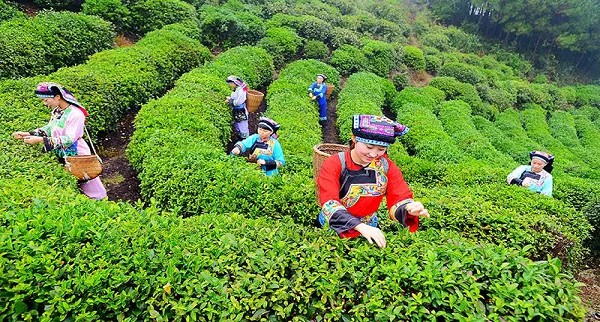
In recent years, green tea extract has received more and more attention in the field of medical research. Many researchers are exploring its potential benefits for human health.
Antioxidant properties
The catechins in green tea are powerful antioxidants that neutralize free radicals and help prevent cellular damage. This provides a theoretical basis for its possible role in anti-aging, anti-cancer and prevention of other diseases.
anti-inflammatory properties
Studies have shown that green tea extracts can reduce the body's inflammatory response, which lays the groundwork for its potential use in the treatment of inflammatory diseases such as rheumatoid arthritis and other autoimmune diseases.
cardiovascular health
Green tea extract has been shown to lower blood pressure, reduce bad cholesterol and increase good cholesterol, which can help prevent heart disease and stroke.
China's role in the global green tea extract market
As the largest tea producer in the world, China plays a key role in the global green tea extract market. Since ancient times, China has been a major supplier of green tea.
Quality Control and Certification
Chinese producers have deep experience in green tea extraction process, quality control and product standardization. At the same time, as consumers pay more and more attention to product quality and safety, many factories begin to seek international certifications, such as GMP and ISO, to ensure the international quality standards of products.
Innovation and R&D
Green tea extract producers in China not only focus on traditional extraction techniques, but also invest heavily in new technologies and research and development. New extraction methods, improved product formulations and customized solutions are all in the direction of their efforts.
Collaboration and Global Partnerships
In order to expand the international market, many Chinese green tea extract manufacturers have established partnerships with global distributors, brands and R&D institutions to jointly develop new products and meet market demand.
Summarize
Green tea, a traditional Chinese beverage, is playing an increasingly important role in health food and medical research in recent years. Its extracts are rich in antioxidants and have been shown to be beneficial to human health in several studies. China, as the birthplace and major producer of green tea, has contributed a lot to the global green tea extract market. In the future, with the continuous innovation of technology and the continuous expansion of the market, we have reason to believe that green tea extract will continue to play a more important role in the field of health and medicine.
TAGS:- ▶ Hesperidin
- ▶ citrus bioflavonoids
- ▶ plant extract
- ▶ lycopene
- ▶ Diosmin
- ▶ Grape seed extract
- ▶ Sea buckthorn Juice Powder
- ▶ Beetroot powder
- ▶ Hops Extract
- ▶ Artichoke Extract
- ▶ Reishi mushroom extract
- ▶ Astaxanthin
- ▶ Green Tea Extract
- ▶ Curcumin Extract
- ▶ Horse Chestnut Extract
- ▶ Other Problems
- ▶ Boswellia Serrata Extract
- ▶ Resveratrol Extract
- ▶ Marigold Extract
- ▶ Grape Leaf Extract
- ▶ blog3
- ▶ blog4
- ▶ blog5
-
Pure 85% Tomentil Extract.
2023-08-14
-
Oat Straw Extract Powder
2023-08-14
-
Artichoke Leaf Extract
2023-08-14
-
Troxerutin
2023-08-14
-
Sophora Flavescens Root Extract
2023-08-14
-
Kupilu Extract
2023-08-14
-
Nutmeg Extract
2023-08-14
-
Ginger Extract
2023-08-14
-
Gynostemma pentaphyllum extract
2023-08-14
-
Black Pepper Extract
2023-08-14
-
Avocado Extract Powder
2023-08-14





















